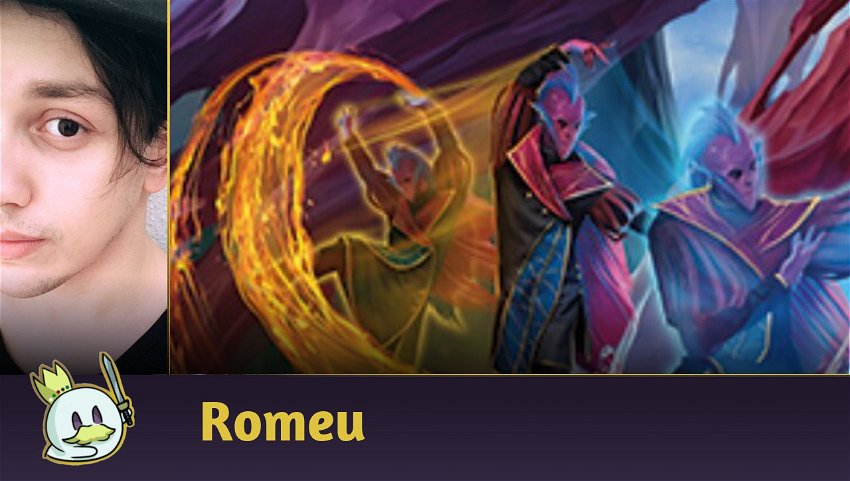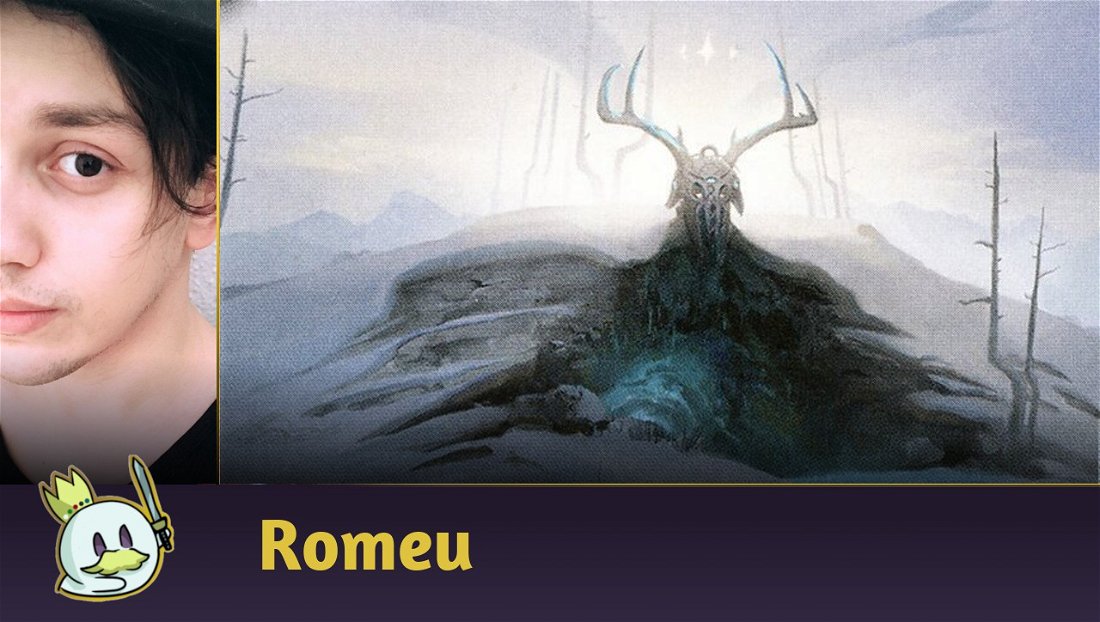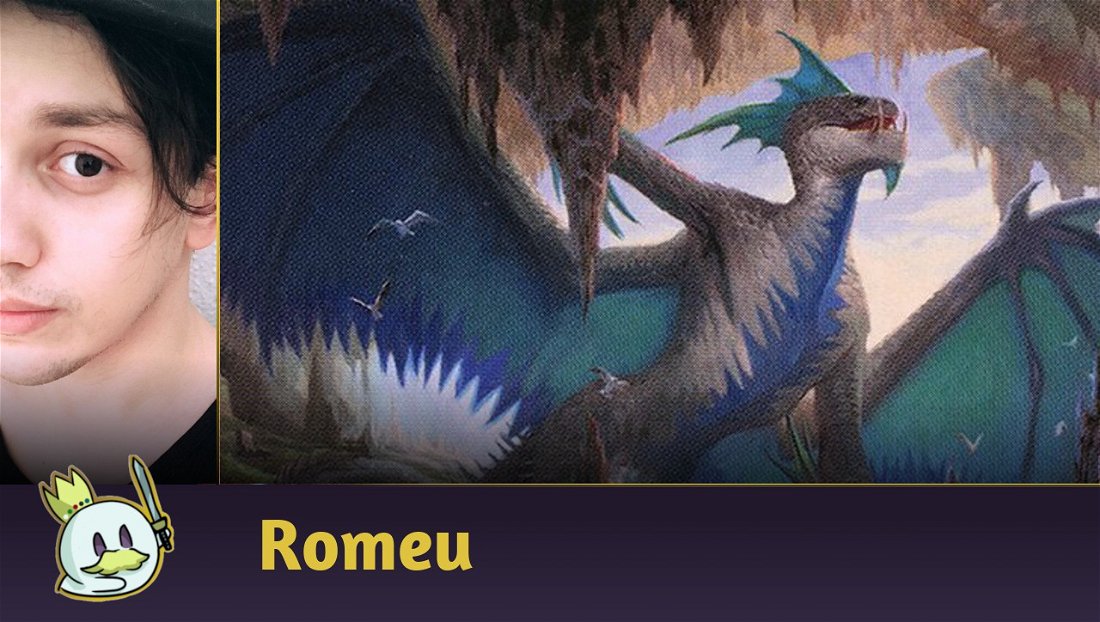We're back with another retrospective of cards that most impacted the competitive formats in 2021, and today we'll be talking about my favorite format of the past few months, Pioneer!
Pioneer in 2021
The year 2021 was strange and unusual for Pioneer. At the beginning of it, we had a massive bans wave in various competitive formats that, in Pioneer, took the cards Teferi, Time Raveler, Wilderness Reclamation, Uro, Titan of Nature's Wrath, Balustrade Spy and Undercity Informer. With the first three cards being considered too powerful, while Balustrade Spy and Undercity Informer have become too consistent due to Zendikar Rising's Spell-Lands.
Ad
After that period, Pioneer seemed to be slowly pushed aside. Left both by players, with Challenges and other events not reaching the minimum quorum for several weeks, and even by Wizards, when it announced it would be postponing (and later canceling) Pioneer Masters, a set that would bring the format to Magic Arena.
This cycle of the format seeming forgotten and abandoned repeated itself for months during 2021, until Wizards finally gave some sign that it still had plans for Pioneer when, in August, the company announced Challenger Decks for the format. There were four lists almost ready to pick and play in local stores. They have rekindled a significant portion of the community's interest, as well as making it more accessible to players who have never had contact with Pioneer before and didn't have a way to get a deck to play at an affordable price.
With that, Pioneer has regained public attention, and I've seen local store events having a great quorum for the format this holiday season, while new decks and new ideas have emerged recently with the recent additions of Crimson Vow and Midnight Hunt.
By the way, I didn't comment on the format's Metagame, as it seemed to be in a situation where the best decks took turns with each other most of the time. Until Strixhaven brought Expressive Iteration, which leveraged Izzet Phoenix to the top of the format for quite some time and, to this day, it can be considered the best deck in the current Metagame.
Other significant appearances were the Midnight Hunt Werewolves, which gave Naya Winota the engine needed to become one of the most powerful archetypes in the format. While Crimson Vow brought in Edgar, Charmed Groom and Sorin the Mirthless, which put Vampires as one of the top contenders.
That said, we can better talk about archetypes that emerged this year with the cards that were, for me, the most impactful for Pioneer in 2021.
The Ten Most Impactful Cards for Pioneer in 2021
10 — Portable Hole

Portable Hole is a cheap removal capable of handling many of the threats the format has presented for quite some time, and to this day, it has proven an effective way of interacting with low-cost creatures.
However, the main reason why Portable Hole is on the list, while other removals are not present, is that the artifact was one of the main reasons behind Azorius Ensoul's reappearance. This deck was among the top tiers of the format for some time after the release of Adventures in the Forgotten Realms, while also having its usefulness extended to other archetypes, such as Mono-White Humans.
9 — Midnight Hunt's Dual Land Cycle

It is common knowledge that Pioneer's manabase is worse for allied colors than for enemy colors. These combinations lack some important cycles like Fastlands, Manlands or Painlands to increase their consistency, which always made allied lists run some suboptimal options.
Ad
Innistrad: Midnight Hunt's Slow Lands cycle has given these decks more consistent access to the colors needed for these archetypes to operate well. This without, on many occasions, needing to delay your game plan due to the absence of specific mana colors or lands that come into play tapped in low-prone moments, and are widely played in several decks as at least 2-ofs.
The enemy color cycle featured in Innistrad: Crimson Vow has also been shown to have some presence and impact in the Metagame, even being present as a 2 or 3-of in Izzet Phoenix and other archetypes with an already pretty consistent manabase.
8 — Graveyard Trespasser

Although we have a full cycle that interact with graveyards on a recurring basis in Crimson Vow, the most powerful graveyard hate in creature form released in 2021 came in Midnight Hunt, Graveyard Trespasser.
I'm not certain why Cemetery Desecrator is so bad compared to the rest of the cycle, and even worse compared to this card. I'm sure Graveyard Trespasser could have been the version to be present in Crimson Vow because it's exactly what the cycle offers: a way to deal with cards in your opponent's graveyard and receive a benefit for doing so.
In this case, Trespasser allows you to exile cards and increase your clock through the damage done by this ability, or lower your opponent's clock through lifegain, while being a 3/3 body that can become a 4/4 with little effort, and it also has a built-in protection.
It is clear that the success of this creature in the current Pioneer scenario is due to the fact that the format today is very focused on archetypes that seeks to take some advantage of their graveyards. Its usefulness can be mitigated when archetypes with other less-graveyard-focused strategies become predominant.
7 — Prosperous Innkeeper

Prosperous Innkeeper did not receive due recognition when it was first released at Adventures in the Forgotten Realms, but soon proved to have enormous potential in the most diverse competitive formats, such as Standard, Historic and also Pioneer.
In our format, the card initially emerged as one more way to give consistency and speed up Jund Citadel's mana. The deck is a more combo-oriented version of Jund Sacrifice, where its goal is to cast Bolas's Citadel as soon as possible and, from there, have ten permanents on the battlefield (and preferably one Mayhem Devil) to close a combo-kill.
In this case, Prosperous Innkeeper not only gave the deck a way to speed up the game plan, it also adds two permanents into play when the extra mana is no longer needed. In addition to his occasional lifegain that also serves to mitigate the costs of casting spells from the top of your deck with the artifact.
Another archetype where the card stood out is in Naya Winota, where the creature offers one more consistent way to cast Winota, Joiner of Forces on turn 3 while also being another permanent that triggers the archetype's centerpiece ability. I consider it the most important mana dork in the deck right now since, in addition to coming into play in the exact sequencing where you can cast Winota on turn 3, the creature doesn't have to be tapped to generate mana, making it an immediate threat once Winota hits the board.
Ad
Because of these qualities and for becoming an essential piece of two archetypes, Prosperous Innkeeper is in my Top 10.
6 — Adventures in the Forgotten Realms' Manlands Cycle

The Adventures in the Forgotten Realms manlands have a relevant presence in the format, being present in some quantity in several lists.
Among them, Hall of Storm Giants has been extensively played in Control decks, while also finding its way into Izzet Phoenix when the archetype adopted the Galvanic Iteration + Temporal Trespass combo, serving as yet another powerful and consistent alternate wincondition.
Hive of the Eye Tyrant is a powerful Metacall in a format where graveyards are a centerpiece, serving as a pseudo-Graveyard Trespasser while managing to evade some of the format's major removals.
Finally, Den of the Bugbear offers a pseudo-Goblin Rabblemaster / Legion Warboss at a viable cost, and has added a powerful and very relevant way to keep the game going even through removals for red aggressive decks like Boros Burn or Mono-Red Aggro/Big Red.
Although less present, Lair of the Hydra appears occasionally and still has the potential to be very relevant in archetypes like Gruul Aggro or Mono-Green Devotion
I can't say the same for Cave of the Frost Dragon, as it's commonly overshadowed by Hall of Storm Giants for Control decks, and Aggro decks prefer to run Mutavault or even Faceless Haven.
However, the presence of these cards in the format is undeniable, and this is enough to put them in sixth position.
5 — Go Blank

As I've already mentioned a couple of times in this article, Pioneer is a format where, currently, a significant portion of archetypes, including the best deck in the format, interacts with their graveyards. In this context, Go Blank is Pioneer's most effective graveyard hate today because it does a lot to disrupt these strategies.
Decks like Izzet Phoenix, Rakdos Arcanist, or archetypes that resort to Dig Through Time can play around graveyard hate like Grafdigger's Cage or Rest in Peace. Either by bringing efficient answers, or even opting for a "fair game" route, where the graveyard becomes less relevant.
But Go Blank, while not offering a permanent way to deal with an opponent's graveyard, does offer a disruptive element in the form of a Mind Rot. Whcih although it was never an impressive card, it adds a lot when coupled to the opponent's graveyard exile because it removes even more resources, giving a difficult time for decks that rely on the graveyard to get card advantage, or that rely too heavily on Delve spells to replenish their own resources, making the Strixhaven discard one of the most important cards in the current Metagame
4 — Thalia, Guardian of Thraben
Ad

Of the reprints we had in 2021 (and they were not that many), I think Thalia, Guardian of Thraben was by far the most important for Pioneer.
For some time now, the format found itself in a scenario where decks that used few creatures and many spells found little or no barrier to their strategy. Thalia's inclusion in Innistrad: Crimson Vow finally gave Pioneer a way to mitigate or prey on these archetypes. While it's not enough (since several low-cost removals handle Thalia very efficiently), it's a step in the right direction to improve the Metagame's balance between creature and non-creature decks.
On her own, Thalia, Guardian of Thraben was responsible for the rise of the diverse and most varied forms of Humans decks. Going from Mono-White to Orzhov, passing through Selesnya and even Azorius and, for adding an effect that until then was non-existent in the format, the card deserves to be in the Top 10.
3 — Werewolves

I don't know if we can actually call this category a cycle, especially when they are mixed between two sets. Werewolves gave the potential to a certain card to dominate the format with everything it takes for it to become one of the main archetypes in the Metagame, shaping Naya Winota as we know it today.
The big plus that brought the Werewolves to the payoff level of one of the most powerful cards ever released recently is that they're all good creatures in their own right, while offering great synergy with each other or generating powerful snowball effects If the opponent doesn't interact correctly, the Daybound/Nightbound cycle makes each of these creatures even more threatening as the game expands, especially for a deck that, after establishing its board position, doesn't feel the slightest need to cast spells because each of your creatures already does a fantastic job of creating additional effects.
With that, I consider that the Werewolves cycle was the most important 2021 cycle for Pioneer. It has enabled and raised to Tier 1 one of the archetypes with the greatest potential to break the Metagame, and time will tell whether future additions will make Naya Winota even more menacing.
2 — Expressive Iteration

You've seen me mention this card in practically every article in formats where it's legal, and it wouldn't differ on Pioneer.
Expressive Iteration is undoubtedly the main driver of Izzet Phoenix's rise to the status of best deck in the format. It is one of the most powerful card selections released in years, offering the archetype the ability to filter three cards from the top of your deck, guarantee your land drops in early game, increase your spell sequencing to Thing in the Ice or Arclight Phoenix in Late-Game or even finding the right answers, or threats at the right time.
Ad
In addition, the card is also one of the main responsible for the ascension of the Jeskai Ascendancy decks, as it offered even more consistency to the archetype of finding its combo pieces or keeping the spells going while you're in the middle of it.
It also enabled other powerful archetypes over time, such as some Grixis decks that occasionally pop up running Dreadhorde Arcanist and even Lier, Disciple of the Drowned.
1 — Consider

In a list with so many high-impact cards, how does a cantrip top my list of most impactful cards this year for Pioneer?
Well, basically because the format lacked good cantrips, especially one-mana cards that could be functionally better than Opt, as we obviously don't have Ponder or Preordain and not even Serum Visions or Portent.
Consider, however, despite being “only” an upgraded version of Opt, has proven to be more than enough to increase the consistency of several blue-based decks, as it can remove cards from your deck completely, putting them into your graveyard.
This interaction with graveyards even puts Consider on a very high level when it comes to Delve spells, as it counts as up to two extra cards in your graveyard. It significantly speeds up cards like Treasure Cruise and Dig Through Time and may be, along with Galvanic Iteration, one of the main reasons why Temporal Trespass has been widely played in Izzet Phoenix.
Ultimately, Consider has given some of the best decks in the format more consistency and significantly impacted the value generated by graveyard interactions. I foresee it being a staple for quite some time yet, and if it's not eventually banned for its possible super-efficiency with graveyard interactions (which, let's be honest, would be a mistake), will definitely become one of Pioneer's most essential staples!
Conclusion
That was my analysis of the most impactful cards for Pioneer in 2021, a somewhat atypical year for the format, but one that ends with great potential for it to grow and evolve.
Ultimately, the format's success depends on two essential factors: an engaged community willing to keep the format buzzing enough for it to be targeted at major competitive events, and Wizards' support with format-driven products and large-scale Pioneer events taking place at times when it's possible to play huge events like MagicFests again.
What I can hope for next year is that both of these factors will be in harmony. The interest of both the community and Wizards itself can provide a gaming experience in the format that ultimately attracts new players and major competitors from other eternal or rotating formats.
Thanks for reading!








— Comments0
Be the first to comment